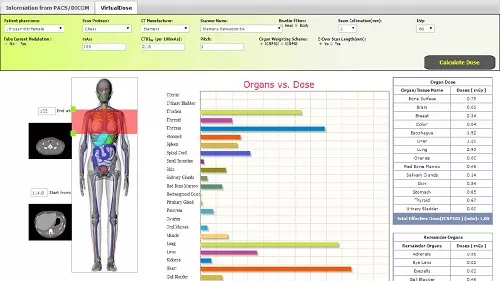Looking ahead: Compliance with regulations on CT equipment and dose monitoring
One of the topics weighing heavily on the minds of those providers who perused all the new CT imaging equipment on display at RSNA 2014 was the new legislation dedicated to medical imaging as it relates to making provisions to more strictly control CT dosage requirements under NEMA Standard XR-29-2013.
The standard identifies common CT system attributes that contribute to or help perform optimization/management of doses of ionizing radiation while still enabling the system to deliver the diagnostic image quality needed by the physician.
Specifically, the NEMA standard, also known as the MITA SmartDose Standard, includes:
· DICOM-compliant radiation dose structured reporting,
· Dose check features,
· Automatic exposure control, and
· References for adult and pediatric protocols.
Equipment not in compliance by January 1, 2016, will be subject to a five percent /per scan technical component reduction on diagnostic CT procedures billed in physician office and hospital outpatient settings. The reduction will increase to 15 percent January 1, 2017.
Providers not only need to assess their operating equipment, but also their data collection and reporting capabilities to ascertain whether or not they will be in compliance with the standard and avoid reimbursement penalties.
CT scanners
From an equipment perspective, providers need to know whether or not the CT equipment they are operating meets the NEMA standard. If they are operating older equipment, they need to consider the options. “Is it possible to upgrade my current system? Is it worth the cost to do that? Maybe I should consider a capital equipment investment for a new system?”
According to Harry Purcell, operations manager with Zotec Partners, in a recent conversation with imagingBiz.com, “The current estimate is that a little more than a third of the CT equipment being used today does not meet that standard.”
ImagingBiz asked the question to Siemens Healthcare at RSNA, “From a cost perspective, are you advocating the purchase of new equipment because of the costs involved in upgrading older systems?”
According to Matthew Dedman, all new CT equipment from Siemens meets the standard, and 90 percent of Siemens’ installed base of CT equipment is upgradeable. Furthermore, “Siemens is providing the upgrade to its customers free of charge,” Dedman said, “because of the importance of minimizing patient exposure to radiation dose.”
Radiation dose monitoring and tracking
There is a tremendous need in the healthcare industry to understand just how much radiation is delivered by various devices, and to track patients’ accumulated radiation exposure. But because a facility rarely operates systems from a single vendor, the dose-related data are likely stored on a number of disparate systems and disconnected databases.
“The surge in the application of data analytics in healthcare, together with the need to monitor and track radiation dose, has spawned the creation of sophisticated technology like Sectra DoseTrack™ that will not only collect the data from disparate systems, but also provide detailed analysis,” said Andrea Sowitch, vice president of marketing for Sectra, North America.
Sectra DoseTrack™ is one example of a dose tracking software created to harness all of that data from different vendor systems. Highlighted at RSNA, the software enables a facility’s entire fleet of scanners’ dose related data to be tracked in one database. It allows a facility to monitor its own progress and enable it to compare its own data to data from regional and national averages, available through the ACR’s dose index registry. Importantly, Sectra DoseTrack also generates user-friendly reporting that enables calculation and visualization of dose information to specific organs, and has the ability to send alerts when a patient has had multiple studies on the same area.
The use of a dose tracking, monitoring, and reporting software in a facility can enable it to compare current data to data from three and six months from now, for example, and enable documentation of how analysis and changes to protocols effectively led to reduction in dose.
It can also be used to compare departmental dose exposure, as well as individual provider data. There are some specialties whose use of radiation is substantially higher than others and current dose rates may stand out as being higher than most when the data are retrieved and analyzed.
